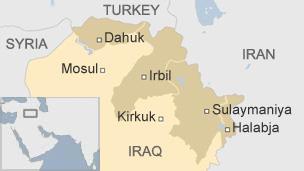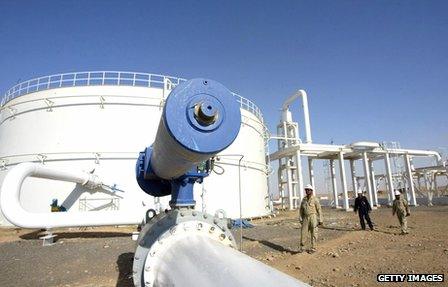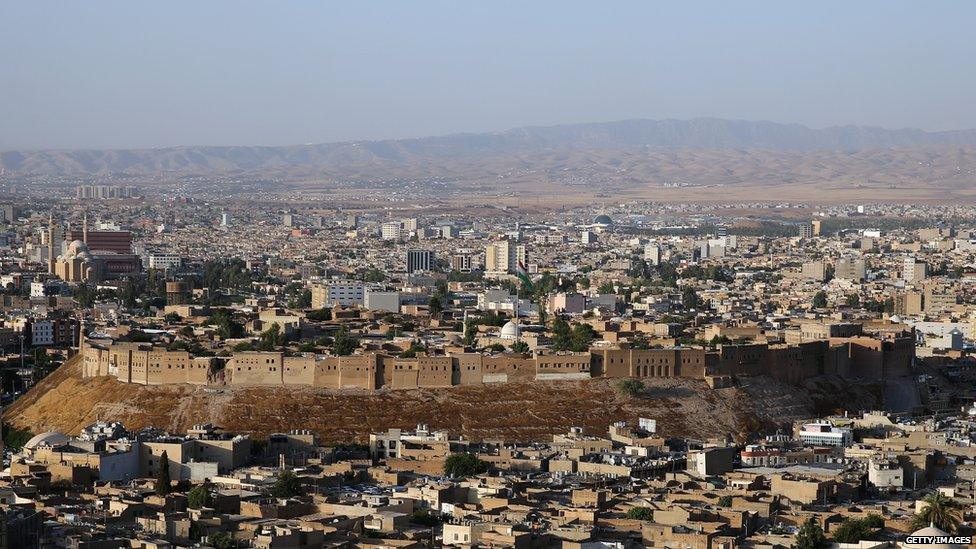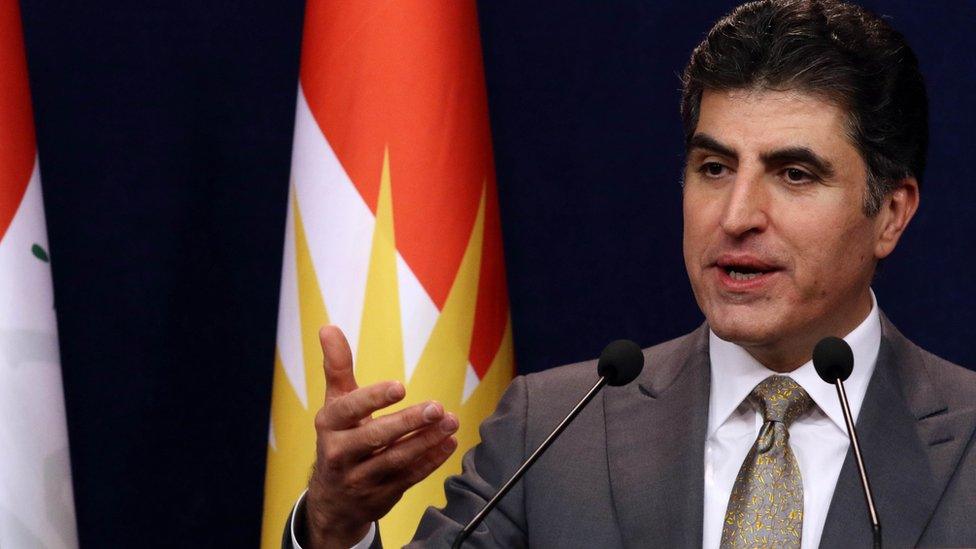Iraqi Kurdistan profile
- Published

Iraq's 2005 Constitution recognises an autonomous Kurdistan region in the north of the country, run by the Kurdistan Regional Government.
This was the outcome of decades of political and military efforts to secure self-rule by the Kurdish minority, who are estimated to number more than 6 million and make up between 17% and 20% of the population of Iraq.
Kurds, who number 30-40 million in total, live in a compact area that reaches from Syria in the west to Iran in the east and Iraq in the south, north through Turkey, and into the states of the former Soviet Caucasus.
Timeline - a chronology of key events
Read more country profiles, external - Profiles by BBC Monitoring
Only in Iraq have they managed to set up a stable government of their own in recent times, albeit within a federal state.

The economy in Kurdistan revolves around oil and agriculture
However, the increase of sectarian tensions within Iraq as a whole from 2013 onwards, culminating in a campaign of violence launched by the radical Islamic State group, meant that by 2014 the unity of Iraq was under severe threat.
In July 2014, Iraqi Kurdistan President Massoud Barzani announced that his government planned to hold a referendum on independence later in the year, given that Iraq was already "effectively partitioned". The announcement triggered alarm among Iraq's neighbours, who feared that it could set a precedent for their own restive Kurdish minorities.
But a change of leadership in the Iraqi government was followed by improved relations with Iraqi Kurdistan. The two sides agreed to work together to defeat the common enemy of Islamic State and plans for an independence referendum were put on hold - but only until 2017.
The vote went ahead in September of that year, and the overwhelming majority voted for independence, buoyed in part by the success of their Peshmerga armed forces in defeating Islamic State and advancing into territory that is the subject of a dispute between the central and Kurdish governments. The government in Baghdad reacted angrily and moved to reassert its authority.
Long struggle
The Kurds of Iraq came under British colonial rule after the defeat of the Ottoman Empire in 1918. Frustrated in their hopes for independence, Kurdish leaders launched a series of rebellions against British and subsequent Iraqi rule.

The region's oil reserves have attracted substantial foreign investments
These were put down ruthlessly, most notoriously in the late 1980s when Saddam Hussein attacked the Kurds with massed armed forces in the 'Anfal' campaign.
This involved the deliberate targeting of civilians with chemical weapons, most notoriously in the town of Halabja in 1988.
Various Iraqi governments promised autonomy to the Kurds after the 1958 revolution, but none came to fruition until the anti-Saddam international coalition established a partial no-fly zone in northern Iraq in 1991 after the first Gulf War.
This allowed Kurdish leaders and their Peshmerga armed forces to consolidate their hold on the north after Iraqi forces withdrew, and provided the basis for the 2005 constitutional settlement.
Post-Saddam reconstruction
The immediate tasks facing the Kurdish government were great, and included rebuilding infrastructure, creating an administration and absorbing hundreds of thousands of displaced people after years of war and destruction.
Overall its efforts exceeded all expectations. Iraqi Kurdistan largely escaped the privations of the last years of Saddam's rule and the chaos that followed his ouster in 2003, and built a parliamentary democracy with a growing economy.
Major problems remain, nonetheless. The landlocked Kurdistan Region is surrounded by countries unsympathetic to Kurdish aspirations -Turkey, Syria and Iran.
It is also in dispute with the Iraqi government over several territories, in particular the historic city of Kirkuk.
Tension between the main political parties - the Patriotic Union of Kurdistan and the Kurdistan Democratic Party - erupted into a civil war that almost destroyed the autonomous government in 1994-97, and some differences remain.

The ancient citadel in Irbil was listed as a World Heritage Site in 2014
LEADER
Prime minister: Nechirvan Barzani

Nechirvan Barzani has been the main authority figure in the executive of the Kurdish autonomous region since the departure of President Masoud Barzani in November 2017.
Mr Masoud Barzani stepped down after staging an independence referendum that backfired by provoking a fierce backlash from the central Iraqi government.
The Baghdad government recaptured territory held by the Kurds outside their autonomous region, took control of oilfields that are the lifeblood of the region's economy and imposed an air blockade that held for six months.
Nechirvan Barzani is the nephew of Masoud Barzani. He has served as prime minister for all but three years since 2006 and is seen in Kurdish politics as a less polarising figure, having warmer relations than his uncle with rival Kurdish parties.
TIMELINE
Some key dates in Iraqi Kurdistan's history:
1920 - After the break-up of the Ottoman Empire, Kurdish hopes of having a nation of their own are raised and then dashed. Kurds in Iraq, Iran, Syria and Turkey have sought their own homeland ever since.
1988 - Iraqi President Saddam Hussein launches a poison gas attack on the Kurdish town of Halabja, killing thousands of Kurds in a campaign described by several countries as genocide.
1991 - After the Gulf War, coalition forces create a safe haven for Kurds, who in effect gain autonomy.
1994-97 - Civil war involving forces of the rival Kurdish Democratic Party and the Patriotic Union of Kurdistan.
2005 - After the overthrow of Saddam Hussein, a new Iraqi constitution designates Kurdistan as an autonomous federal region.
2017 - Iraqi Kurds vote overwhelmingly for independence in a non-binding referendum, angering Baghdad, which moves to reassert its authority.